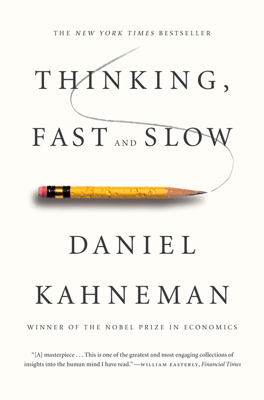Cognitive Ease
Cognitive Ease and Its Implications
Concept of Cognitive Ease: Cognitive ease represents a state where the brain perceives information comfortably and effortlessly, indicating that everything is running smoothly without threats or the need for focused attention. Conversely, cognitive strain prompts the activation of System 2, signaling difficulties that require more cognitive resources.
Factors Impacting Cognitive Ease: Various factors induce cognitive ease, including clear, readable fonts, familiar words, repeated exposure, positive moods, and physical expressions such as smiling. These elements facilitate information processing, making thoughts flow more freely and pleasantly.
Effects of Cognitive Ease:
- In a state of ease, people are more likely to feel happy, trust their intuitions, believe what they hear, and find situations familiar and comfortable.
- Cognitive strain leads to vigilance, skepticism, and less creative but more thorough thinking.
Illusions Related to Memory and Truth:
- Illusions of Memory: Familiarity can create false memories. For example, a non-famous name seen repeatedly can later be misremembered as belonging to a celebrity.
- Illusions of Truth: Repetition makes statements seem more believable, independent of their veracity. This effect is used manipulatively in advertising and propaganda.
Writing Persuasive Messages:
- Advice for enhancing believability includes maximizing legibility, using simple and memorable language, and selecting easily pronounceable names.
- Techniques that decrease cognitive strain, such as using high-contrast colors and straightforward expressions, help in convincing the audience of the message's truthfulness.
Impact of Cognitive Strain on Cognitive Performance:
- Cognitive strain, while initially seeming detrimental, can actually improve performance by engaging System 2, leading to more analytical and careful thinking. An example is the improved performance on cognitive tasks when presented in a difficult-to-read font.
Interplay Between Mood and Cognitive Functions:
- Positive moods enhance intuitive and creative thinking but may also lead to more errors due to decreased vigilance.
- Negative moods increase skepticism and analytical thinking, reducing errors but also stifling creativity.
Practical Implications:
- Understanding cognitive ease can help in structuring environments and tasks to either engage System 2 by introducing slight strain for critical tasks or facilitate easy information processing through System 1 for tasks requiring creativity and intuition.
The Influence of Cognitive Ease in Everyday Interactions:
- Increases susceptibility to influences, as cognitive ease can cause one to lower their guard and accept information more readily.
- Can be strategically manipulated in settings such as marketing, education, and communication to achieve desired responses.
This chapter illustrates how cognitive ease influences our perception, decision-making, creativity, and susceptibility to influence, underlining the importance of managing cognitive strain to balance efficiency and analytical depth in thinking processes.
